
Lip filler techniques have evolved significantly, focusing on restoring volume, enhancing shape, and ensuring natural results. Modern methods emphasize anatomy, safety, and customization, balancing art and science for optimal outcomes.
1.1 Overview of Lip Filler Procedures
Lip filler procedures involve the injection of hyaluronic acid (HA) or other dermal fillers to enhance lip volume, shape, and definition. These non-surgical treatments are highly customizable, addressing concerns like thinning lips, asymmetry, or lack of definition. Techniques vary, with options like the Russian vertical injection method or retrograde linear approaches, each designed to minimize risks and maximize natural-looking results. Safety is a priority, with careful consideration of lip anatomy and vascular structures. The goal is to achieve harmonious, aesthetically pleasing outcomes while maintaining the patient’s unique features. Advances in filler technology and injection methods have made these procedures safer and more effective, catering to diverse patient needs and preferences.
1.2 Importance of Lip Anatomy in Filler Techniques
Understanding lip anatomy is crucial for achieving safe and effective filler results. The lips consist of multiple layers, including the epidermis, dermis, and submucosa, each playing a role in maintaining shape and function. Key structures like the orbicularis oris muscle, vermillion border, and labial arteries must be carefully considered to avoid complications. The philtrum and Cupid’s bow are essential landmarks for maintaining aesthetic proportions. Accurate knowledge of these anatomical features ensures precise filler placement, minimizing risks like vascular damage or uneven distribution. A deep understanding of lip anatomy allows practitioners to tailor techniques to individual facial structures, ensuring natural, harmonious outcomes.
1.3 Evolution of Lip Augmentation Methods

Lip augmentation has evolved significantly over the decades, transitioning from primitive methods to sophisticated techniques. Early practices involved the use of paraffin wax and silicone, which often led to complications. In the 20th century, collagen became a popular choice, offering safer but temporary results. The introduction of hyaluronic acid fillers marked a turning point, providing biocompatible and reversible solutions. Modern advancements include the development of synthetic fillers like calcium hydroxylapatite and poly-L-lactic acid, offering longer-lasting outcomes. The shift toward minimally invasive methods, such as the Russian Lip Technique, has further refined the field, emphasizing natural aesthetics and precision. This evolution reflects a growing focus on safety, customization, and artistry in lip enhancement.
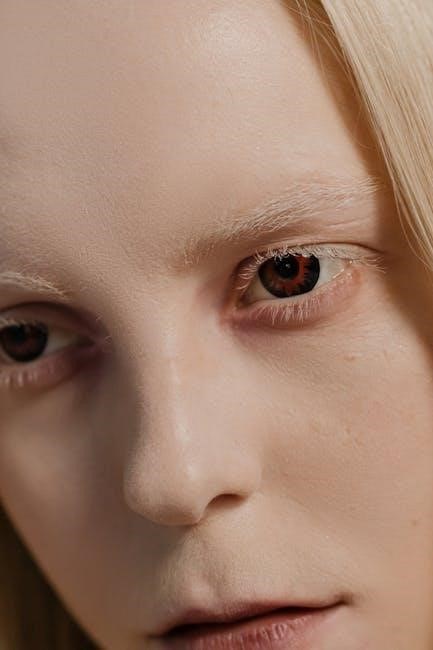
Popular Lip Filler Techniques
Popular lip filler techniques include the Russian Lip Technique, Phi Technique, Retrograde Linear, and 8-Point Lift. Each offers unique benefits, catering to diverse aesthetic preferences.
2.1 Russian Lip Technique: Vertical Injection Method
The Russian Lip Technique involves a vertical injection method, focusing on the vermilion borders to enhance lip definition and shape. This approach targets the lip’s edges, creating a natural, subtle contour. By depositing filler vertically along the lip’s length, it accentuates the Cupid’s bow and improves overall symmetry. The technique emphasizes precision, using small amounts of filler to avoid overfilling. It’s ideal for those seeking a refined, elegant appearance with minimal downtime. The vertical method minimizes swelling and ensures a soft, natural-looking result, making it a popular choice for patients desiring understated yet effective lip enhancement.
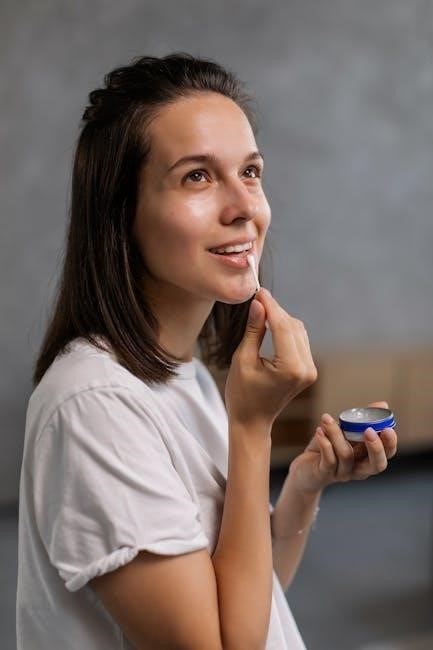
2.2 Phi Technique: Golden Ratio for Lip Enhancement
The Phi Technique is a lip enhancement method based on the golden ratio (1:1.618), a mathematical proportion believed to represent ideal aesthetic balance. This technique focuses on creating harmonious lip proportions relative to the face. Practitioners measure and assess the lips and surrounding facial features to determine the most flattering proportions. The filler is strategically placed to enhance the Cupid’s bow, vermillion borders, and overall lip shape. The goal is to achieve natural, balanced results that complement the patient’s facial structure. This method is popular for its emphasis on symmetry and subtle, elegant enhancement, making it a preferred choice for those seeking a refined aesthetic outcome.
2.3 Retrograde Linear Technique: Minimizing Vascular Risks
The Retrograde Linear Technique is an advanced injection method that involves administering fillers in a reverse direction, from the endpoint of the lip toward the starting point. This approach minimizes the risk of vascular complications by reducing the likelihood of intra-arterial injections. By injecting against the direction of blood flow, practitioners can better visualize and avoid critical vessels. This technique also allows for precise placement of the filler, ensuring a smooth and even distribution. The use of blunt cannulas further enhances safety, as they are less likely to puncture blood vessels compared to sharp needles. This method is particularly favored for its ability to balance aesthetic goals with safety, making it a preferred choice for reducing vascular risks during lip augmentation procedures.
2.4 8-Point Lift Technique for Lip Contouring
The 8-Point Lift Technique is a strategic approach to lip contouring that involves targeting eight specific anatomical points around the mouth. This method enhances the natural shape of the lips by defining the Cupid’s bow, increasing volume, and correcting asymmetry. The technique focuses on precise injections at key landmarks, ensuring a balanced and harmonious appearance. It is particularly effective for creating a subtle lift and improving the overall definition of the lip borders. By addressing these points, practitioners can achieve a more refined and youthful look, making it a popular choice for those seeking natural yet noticeable results in lip augmentation.

Advanced Injection Methods
Advanced injection methods refine lip filler techniques, enhancing precision and customization. These approaches ensure natural results, minimize risks, and cater to individual anatomical needs for optimal aesthetics.
3.1 Submucosal Placement for Natural Results
Submucosal placement involves injecting dermal fillers beneath the mucosal layer of the lip, creating a natural appearance by mimicking the lip’s internal structure. This technique ensures the filler is distributed evenly, avoiding the “overfilled” look. By placing the product deeper, it integrates seamlessly with the lip’s tissue, providing a soft, pliable texture. Submucosal injections minimize visible edges and reduce the risk of complications like Tyndall effect or unevenness. This method is ideal for those seeking subtle, natural-looking enhancement. Proper training and anatomical knowledge are essential to execute this technique effectively, ensuring safety and optimal aesthetic outcomes.
3.2 Hydration and Revitalization Techniques
Hydration and revitalization techniques focus on enhancing lip texture and appearance by restoring moisture and promoting collagen production. These methods often combine dermal fillers with hyaluronic acid to create a more natural, hydrated look. Revitalization involves micro-injections of low-concentration fillers to improve lip elasticity and reduce fine lines. This approach minimizes the risk of overfilling while addressing dehydration and dullness. Techniques like lip brushing or superficial injections are used to evenly distribute product, ensuring a soft, luscious finish. Proper hydration post-treatment is essential for maintaining results, with recommendations including emollient use and sun protection. These methods are ideal for patients seeking subtle, rejuvenated lips rather than significant volume enhancement.
3.3 Hybrid Approaches for Customized Outcomes
Hybrid approaches in lip filler techniques combine multiple methods to achieve personalized results, addressing individual patient needs. By blending techniques like the Russian method with the Phi golden ratio, practitioners can create balanced, proportional lips. These approaches allow for precise volume distribution, enhanced shape, and natural-looking contours. Hybrid methods often incorporate both linear and point injections, ensuring versatility. They are particularly effective for patients with unique anatomy or specific aesthetic goals. Customization is key, as hybrid techniques can address asymmetries, redefine lip borders, and add volume where needed. This adaptable approach ensures tailored outcomes, making it a popular choice for those seeking nuanced, bespoke lip enhancement.
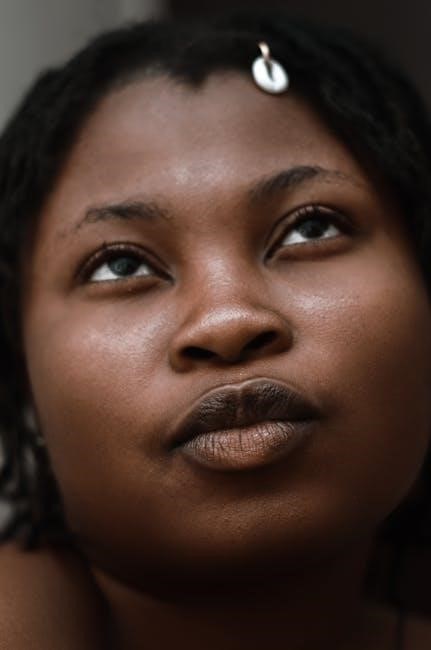
Safety and Risks in Lip Filler Procedures
Lip filler procedures carry risks, including allergic reactions, infections, and vascular complications. Proper technique and aftercare minimize these risks, ensuring safe and effective outcomes for patients.
4.1 Common Complications and Their Prevention
Common complications in lip filler procedures include swelling, bruising, pain, and asymmetry. Rarely, infections or allergic reactions may occur. Prevention involves proper hygiene, use of sterile equipment, and careful patient selection; Minimizing trauma during injection, such as using blunt cannulas or sharp needles appropriately, reduces bruising. Ensuring correct filler placement and avoiding overfilling helps prevent uneven results. Allergic reactions can be mitigated by patch testing certain fillers beforehand. Post-procedure care, like avoiding makeup and keeping the lips clean, further reduces infection risks. Choosing an experienced practitioner significantly lowers complication rates, ensuring safer and more predictable outcomes for patients.
4.2 Vascular Complications: Avoidance Strategies
Vascular complications, such as bruising, hematoma, or vessel occlusion, can arise during lip filler procedures. To minimize these risks, practitioners must have a thorough understanding of lip anatomy, particularly the location of blood vessels. Using blunt cannulas instead of sharp needles reduces the likelihood of damaging vasculature. Proper lighting and magnification can enhance visibility, aiding precise injections. Additionally, applying gentle pressure and using smaller syringes helps control filler placement. Pre-procedure consultations should include assessing patients for bleeding tendencies or medications that thin the blood. Immediate post-procedure care, such as applying ice, can further reduce swelling and bruising. Regular training in emergency protocols, like hyaluronidase administration, is essential for managing severe vascular events.
4.3 Minimizing Edema and Erythema
Edema and erythema are common post-procedure reactions in lip filler treatments, typically resolving within a few days. To minimize these effects, practitioners should employ gentle injection techniques and use blunt cannulas, which cause less tissue trauma. Applying ice packs immediately after the procedure can reduce swelling and inflammation. Patients should avoid excessive sun exposure, strenuous activities, and smoking during the recovery period. Topical creams or ointments, as recommended by professionals, may help alleviate erythema. Providing clear aftercare instructions ensures patients can manage mild side effects effectively, promoting a smoother recovery and better aesthetic outcomes.

Pre- and Post-Procedure Care
Proper preparation and aftercare are crucial for optimal results. Patients should avoid blood-thinning medications, follow hygiene protocols, and adhere to post-treatment guidelines to ensure smooth recovery.
5.1 Patient Consultation and Preparation
Patient consultation is essential to discuss expectations, medical history, and lifestyle. Providers assess suitability, explain risks, and create personalized treatment plans. Preparation includes avoiding blood-thinning medications, alcohol, and smoking to minimize bruising. Hygiene practices, such as avoiding makeup, are emphasized. Patients should also avoid dental procedures and extreme sun exposure beforehand. Clear aftercare instructions are provided to ensure optimal healing. Psychological preparation is equally important, addressing any anxiety and ensuring patients understand the procedure’s nature. Open communication fosters trust and ensures alignment between patient goals and achievable outcomes, setting the foundation for a smooth and successful experience.
5.2 Best Practices for Aftercare
Proper aftercare is crucial for optimal results and minimizing complications. Immediately after the procedure, apply ice to reduce swelling and bruising. Gently clean the lips with a fragrance-free cleanser to prevent infection. Avoid touching or massaging the treated area unless instructed. Refrain from makeup, kissing, or drinking through a straw for 24-48 hours. Stick to a soft food diet for a few days to minimize lip movement. Stay hydrated to support healing, but avoid excessive water intake. Follow your practitioner’s specific advice, as individual needs may vary. By adhering to these guidelines, patients can promote healing, maintain results, and reduce the risk of complications.
5.4 Role of Hydration in Filler Success
Hydration plays a vital role in the success of lip filler procedures. Proper hydration ensures the filler material integrates evenly with the tissue, maintaining a natural appearance. Drinking plenty of water before and after the procedure helps plump the skin, creating an ideal canvas for the filler. Hyaluronic acid-based fillers, in particular, rely on water retention to achieve desired volume and texture. Staying hydrated post-treatment minimizes the risk of uneven distribution and supports long-lasting results. Patients are often advised to avoid dehydrating beverages like alcohol or caffeine immediately after treatment. By prioritizing hydration, individuals can enhance both the aesthetic and durability of their lip filler outcomes.
Tools and Materials in Lip Filler Techniques
Essential tools include blunt cannulas, sharp needles, and syringes for precise filler placement. Hyaluronic acid-based fillers are commonly used for their biocompatibility and versatility in lip augmentation.
6.1 Blunt Cannulas vs. Sharp Needles
Blunt cannulas are preferred for lip filler injections due to their reduced risk of vascular complications, as they push blood vessels aside rather than piercing them. Sharp needles, while more precise, carry a higher risk of accidental vascular puncture. Blunt cannulas are particularly advantageous in delicate areas like the lips, where blood vessels are numerous. Both tools require skilled technique for optimal results. The choice often depends on the procedure’s specifics and the practitioner’s expertise. Modern practices increasingly favor blunt cannulas for their safety profile, especially when combined with hyaluronic acid fillers. Proper training is essential for mastering these tools to ensure patient safety and aesthetic outcomes.
6.2 Choosing the Right Dermal Filler Product
Selecting the appropriate dermal filler for lip enhancement is critical for achieving desired results. Hyaluronic acid fillers, such as Juvéderm and Restylane, are popular due to their biocompatibility and reversible nature. Calcium hydroxylapatite fillers, like Radiesse, offer longer-lasting results and are often used for deeper contouring. Collagen-based products provide a natural feel but may require allergy testing. The choice depends on factors like lip structure, desired outcome, and patient preferences. Practitioners must consider the filler’s viscosity, durability, and ability to integrate smoothly with surrounding tissue. Balancing these elements ensures a safe, effective, and aesthetically pleasing lip augmentation. Proper product selection is a cornerstone of successful lip filler techniques.
Case Studies and Real-World Applications
Real-world applications demonstrate the effectiveness of various lip filler techniques. Case studies highlight successful outcomes, patient satisfaction, and the practical use of different methods in achieving desired results.
7.1 Successful Outcomes in Lip Augmentation
Successful lip augmentation outcomes are characterized by natural-looking results and high patient satisfaction. Techniques like the Russian Lip Method and Phi Technique have shown consistent success, enhancing lip shape and volume while maintaining a natural appearance. Proper anatomical understanding and precise filler placement are key to achieving these results. Case studies reveal that patients often report improved self-confidence and satisfaction with the aesthetic and functional outcomes. Advanced methods minimize complications, ensuring long-lasting and visually pleasing results that align with individual desires. Customization plays a crucial role in meeting specific patient needs, further enhancing overall satisfaction levels in lip augmentation procedures.
7.2 Patient Satisfaction and Results
Patient satisfaction in lip filler procedures is often linked to the achievement of natural, balanced results. Many individuals report heightened confidence and a positive emotional response to their enhanced appearance. Satisfaction levels are influenced by factors such as the precision of the technique used, the expertise of the practitioner, and the patient’s adherence to aftercare instructions. Personalized approaches, like the 8-Point Lift or Phi Technique, ensure results align with individual facial aesthetics. Patients frequently highlight the subtle yet impactful changes that contribute to a more refined and youthful look. Overall, the combination of artistry and science in lip filler techniques ensures high patient satisfaction and desirable outcomes.
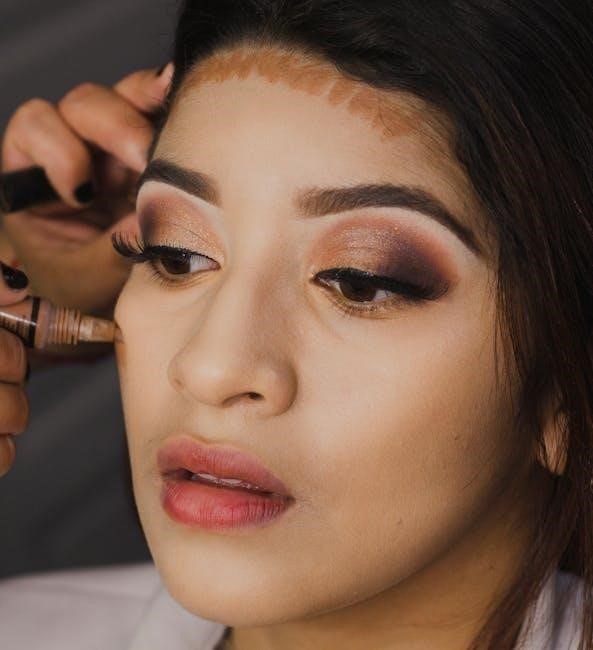
Comparing Injection Techniques
Comparing injection techniques reveals varying focuses on natural results, precision, and risk reduction, each offering unique benefits tailored to individual patient needs and aesthetic goals.
8.1 Pros and Cons of Different Methods
Different lip filler techniques offer unique advantages and drawbacks. The Russian method provides dramatic volume but may pose higher vascular risks. The Phi technique ensures natural results through the golden ratio but requires precise skill. The Retrograde method minimizes vascular complications yet may lack precision in shaping. The 8-Point Lift enhances contours but may not suit all facial structures. Each method balances aesthetics, safety, and customization, making practitioner expertise and patient consultation crucial for optimal outcomes.
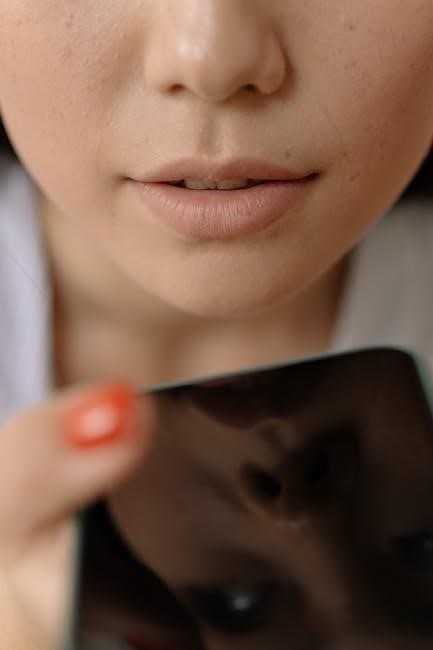
8;2 Customizing Techniques for Individual Needs
Customizing lip filler techniques ensures personalized results tailored to each patient’s facial anatomy, skin type, and aesthetic preferences. Practitioners assess factors like lip shape, symmetry, and desired volume to choose the most suitable method. For instance, the Russian technique may be ideal for those seeking dramatic volume, while the Phi technique aligns with natural enhancement. Hybrid approaches often combine methods to address unique concerns, such as asymmetry or thin lip borders. The expertise of the practitioner is key to adapting techniques and ensuring outcomes that harmonize with the patient’s overall facial features, delivering both functionality and aesthetic appeal.

Future Trends in Lip Filler Techniques
Future trends include biodegradable fillers, personalized treatments, and advanced cannula designs. Innovations in 3D printing and nanotechnology may revolutionize filler materials for safer, more tailored results.
9.1 Advances in Filler Technology
Advances in filler technology are revolutionizing lip augmentation, with innovations in biocompatible materials and longer-lasting formulas. Researchers are developing fillers with improved viscosity and elasticity, reducing migration risks. Customizable fillers tailored to individual lip anatomy and desired outcomes are gaining traction. Additionally, combination therapies blending fillers with neuromodulators are being explored for comprehensive facial rejuvenation. Enhanced cross-linking technologies improve durability, minimizing the need for frequent touch-ups. These innovations aim to deliver safer, more natural results, aligning with patient demands for subtle, personalized enhancements. The focus is on creating products that integrate seamlessly with natural tissue for authentic aesthetic improvements.
9.2 Emerging Injection Methods
Emerging injection methods in lip fillers focus on precision and customization, enhancing both safety and results. Microdosing techniques involve administering smaller, strategic amounts of filler to achieve subtle, natural-looking enhancements. Nano-injection, using ultra-fine needles, minimizes discomfort and reduces the risk of complications. Personalized injection mapping, often guided by 3D imaging, ensures tailored placement based on individual anatomy. Additionally, dynamic injection methods adapt to facial movements, preserving natural expressions while adding volume. These innovations prioritize patient comfort, aesthetic balance, and long-term satisfaction, setting new standards in lip augmentation. As techniques evolve, they aim to address diverse patient needs with greater accuracy and artistry.
Lip filler techniques have evolved significantly, balancing artistry and science for natural, safe results. This guide provides a comprehensive roadmap for mastering modern lip augmentation methods.
10.1 Final Thoughts on Lip Filler Techniques
Lip filler techniques have revolutionized facial aesthetics, offering tailored solutions for enhanced beauty. By understanding anatomy, choosing the right methods, and prioritizing safety, practitioners achieve natural, long-lasting results. Patients should seek skilled professionals to minimize risks and maximize satisfaction. Continuous learning and adaptation to emerging trends are essential for mastering these techniques. This guide provides a comprehensive foundation, but hands-on experience and ongoing education are key to excellence. Whether for subtle refinement or dramatic transformation, lip fillers remain a powerful tool in modern cosmetic procedures. Always prioritize quality and safety to ensure the best outcomes for patients.
10.2 Downloadable PDF Guide for Further Learning
For those seeking in-depth knowledge, a downloadable PDF guide on lip filler techniques is an invaluable resource. This comprehensive guide covers everything from basic principles to advanced injection methods, ensuring a thorough understanding of the subject. It includes detailed illustrations, case studies, and expert tips, making it a must-have for both practitioners and enthusiasts. The PDF format allows for easy access and reference, enabling learners to study at their own pace. By downloading this guide, individuals can deepen their expertise and stay updated on the latest trends in lip augmentation. It serves as a practical tool for mastering the art of lip filler techniques effectively.